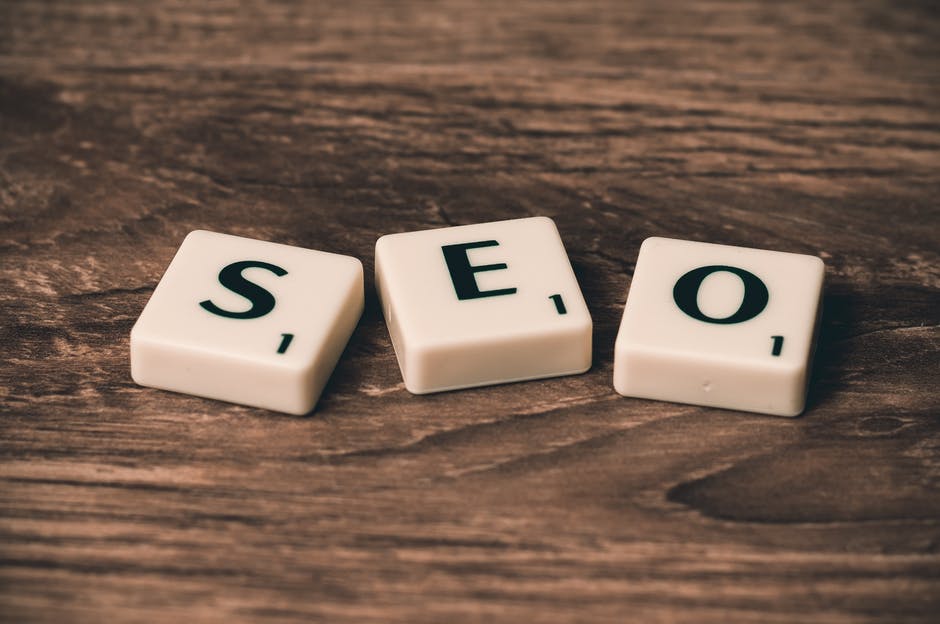Search intent in SEO is the primary goal of the searcher. This goal can get broken down into four primary intents. The four primary intents are informational, commercial investigation, transactional, and navigational.
Did you know that Google processes over 3.5 billion searches per day? Or that Google is the most viewed website, and around 7.2 percent of their traffic comes from Googling the word Google?
Google is a monster of a search engine and dominates the search engine market to such a big degree that its name has become a verb. When your customer base hops on Google, will they find you?
Understanding search intent in SEO is an essential part of this equation. If you want your name to top the lists on Google, keep reading to learn everything you need to know about the importance of search intent.
Table of Contents
What Is Search Intent?
When you go to Google and type in your search, what is your primary goal? Your primary goal for searching is defined as your search intent or user intent.
For example, if a user goes to Google and types in hair stylist, they will get a range of information. Is their goal to find information on how to become a hair stylist? Or do they want to find a hair stylist?
Do they need a hair stylist for a specific event? Do they want to hire a hair stylist? When you understand the why behind your user’s search, you understand their search intent.
Why Is Search Intent Important?
The role that Google and other search engines play is to deliver results that answer the user’s question. The results are driven by the search intent of the user.
Because of this, search intent is important for you as well. Understanding your user’s search intent will help you to understand how to formulate your content to optimize for SEO.
Types of Search Intent
Search intent can get broken down into four primary categories. Knowing these categories will help further your understanding of search intent.
Informational
With this type of post, the goal is to obtain information. This information can come in the form of definitions, recipes, how-to guides, and other informational posts.
Informational posts are one of the most common search intents. Think about it, if you have a question or want ideas, how likely are you to pull your phone out and toss your query into a search engine to help answer that question?
Examples of informational searches could include:
- How to increase blog traffic
- Patrick Swayze
- Directions to Disney World
- What is search intent
In each of these situations, the user is seeking to do research and find more information about a specific topic.
Preferential or Commercial Investigation
Do you sell a product? If your target customer base is past the research phase and investigating different products, brands, or services, they will do a commercial investigation.
Their focus is on investigating which product, brand, or service they want to utilize and which one will be the best solution for their need. This is about finding options to meet your needs.
For example, a few things that could get searched here include:
- Best analytics for profitable content websites
- YouTube vs. Twitch for live streaming
- Netflix vs. Hulu
- Playstation reviews
In each of these examples, the user is seeking to find more information about brands, products, or services they are considering using.
Transactional
These users want to make a purchase. They know what they are looking for, and they are in buying mode.
A lot of these searches will utilize branded names; that’s because your user is past the stage of researching, and now they just want to know where to buy the product, service, or subscription.
For example, a few things your user may search include:
- Buy Acer Predator gaming laptop
- Grammarly Premium subscription coupon
- Shop Yeti cooler
- Sale on Butterball Thanksgiving Turkey
The intent here is to find a place to purchase the product, service, or subscriptions and find deals when purchasing.
Navigational
These users want to find and navigate to a specific website. However, they may have forgotten the address, or it may be quicker to type a search in Google versus typing out the URL.
Because your user is looking at a specific page, the words they use are often branded. They may also add in some modifiers to help them find an exact page.
For example, a few searches you may see include:
- Chase Bank login
- WordPress
- Title Console analytics software
With these searches, your user wants to find a specific webpage or website to go to.
How Do You Determine Search Intent?
Determining search intent for a content website is imperative. Once you know what the search intent is, you can begin to translate that into optimizing your SEO.
Keyword Modifiers
Your user’s keyword modifiers or lack of keyword modifiers can tell you a lot about your user’s intent. For example, if you were to simply google the name Patrick Swayze, you may be looking for just general information on this actor.
However, your user can also modify this search to better match their intent. They could instead search “Patrick Swayze movies” in this circumstance, their intent is still informational, but they’re trying to hone in on more specific information.
A Google search of “Patrick Swayze fan clubs” will move your user to a commercial investigation. This will allow them to view various fan clubs and compare which ones they like and do not like.
If your user were to Google “buy Patrick Swayze Movies,” they’ve now moved to a transactional user intent. Finally, if your user Googles “Official Patrick Swayze Fan Club,” they have now moved to a navigational user intent.
You can see from these examples that the search intent changes swiftly based on the modifiers. In all of these examples, the base for the search was the name Patrick Swayze; however, the intent changed based on the additional words added.
Read the Search Engine Response Page or SERP
What comes up when you Google your targeted keyword? Look through the results that come up, and you can likely see what Google believes the most relevant user intent is for each term.
Taking the time to research SERP is key to understanding search intent. The results you will see will vary significantly based on the user intent.
Informational Intent
Informational is the most common intent, and these keywords tend to have SERP results that provide condensed information. You see this in knowledge grabs, featured snippets, and related questions.
You will likely find informative blog posts, dictionary definitions, and Wikipedia at the top of these lists.
Commercial Research Intent
With this intent, you may see some of the same things at the top of the page as you would with an informational intent. For example, you could see a featured snippet.
However, you will also see paid results at the top of your SERP in this situation. You are also more likely to find information about brands searched instead of topical information.
Transactional Intent
This intent is easy to call out in the SERP. If the intent is transactional, it leads with paid results and shopping results or carousels and reviews. Any organic results are going to come from product pages and retailers.
This search might also bring up maps to the locations of retailers who sell the product in question.
Navigational Intent
Remember that these users already know what website they want. This means you will see the most relevant results on the top.
For example, if your user were to Google the word Netflix, it would come up with Netflix at the top with options to navigate to various parts of the Netflix website.
You might also see knowledge cards and top stories. This is dependent on the specific search.
Use a Holistic Approach
When determining user intent, you should look at SERPs and the keywords. However, keep in mind that keywords can have more than one search intent.
For example, suppose you were to Google Yeti Cooler. In that case, your intent could be a commercial investigation in trying to find more information on Yeti Coolers and whether it is the right product for you.
However, there is also the possibility that the user’s search intent is transactional. They are ready to buy a Yeti Cooler and want to see what their buying options are.
Keep in mind, too, that things change quickly. While this month, the keyword might come up with a SERP that indicates it is informational in intent, next month, it might have a SERP that is more geared towards transactional.
For example, while Googling the words “pumpkin pie,” you may come up with a ton of informational posts in the form of recipes. However, as it gets closer to Thanksgiving, you may see the user intent shift slightly towards transactional, and Google will begin to show places you can buy a pumpkin pie.
How Does Google Know?
Google knows when your content meets search intent. Are you wondering how?
When your users run a search, Google can see what they are selecting or if they are not selecting anything. This helps Google determine the search intent of various keywords.
That is also one of the reasons that search intent is fluid. A few years ago, Googling Bernie Sanders merchandise would have given you a link to his campaign store.
However, now you also get a ton of other transactional options based on the meme of him wearing mittens.
Moving Beyond Just Information
You know what search intent is; you know how to determine the type of search intent, but do you know how to use this information to the benefit of your website?
There are several ways you can do this. Part of how you move forward will be dependent on the type of search intent you want to optimize for.
However, a great place to start is with your keywords.
Keywords and Search Intent
We saw above that your keywords are significant in helping define your search intent. When you are thinking about creating content on your website, knowing this helps.
It should cue to think about what your clients are thinking when they search Google. For example, let’s say you sell gluten-free cupcakes.
You want your customers to be able to find you whether their intent is informational, commercial investigative, transactional, or navigational, so how to make that happen?
You utilize the keywords that help with achieving your goal. Let’s walk through some examples to help you really nail this down.
Informational
Your customers come to you to buy gluten-free cupcakes; however, if they’re just searching for information on gluten-free baking, you can still drive traffic to yourself through your blog posts.
From an information standpoint, content is king. Your blog is going to be a huge help in getting your audience there and being able to meet their intent on Google.
If you Google gluten-free baking, you will see that the top results are guides that talk about baking gluten-free. This means that this is a great keyword for an informational search intent.
Commercial Research
You have decided that gluten-free is the life for you. Now you want to decide on brands or specific products for your baking. At this point, your searches are going to become very specific and, at times, utilize brand names.
In this scenario, your users may look for information on “gluten-free flour vs. almond flour.” Creating content on your gluten-free bakery website about the differences and uses of both flours could help drive users to your website.
While you may not sell these items, you can still get the traffic and raise awareness about your business.
Transactional
Transactional keywords will take on a different tone. Sticking with our current example, a user may search, “gluten-free bakery near me.”
At this point, they want to find a bakery that is near them to visit and shop from. They also may search for things such as “buy gluten-free baked goods.”
You can have content on your website that will help them find you. However, the other thing that plays a huge role here is Google itself.
Transactional search intent requires to some degree that you also understand local SEO. You should be doing things such as claiming your business on Google and optimizing your site for local SEO.
Navigational
With a navigational search intent, someone might be looking for your particular business website. If we stick with a gluten-free bakery as our example, we need to name our bakery for these purposes.
So let’s call it, Simply Delicious. As your user searches for your website, they may use a query such as “Simply Delicious menu.” Their goal here is to find your website and, specifically, your menu.
How Do You Optimize For Search Intent?
To optimize for search intent, you are going to combine your chosen keywords that are crafted for user intent with various strategies. These strategies will help you get found and help with ensuring your content is up to par.
When you consider how to optimize for search intent, you need to consider each of the categories separately. Your strategy for each type will look slightly different.
Informational and Commercial Investigation
With an information search intent, your user wants to know something. Therefore, you should combine your industry term with words such as:
- What are the benefits of
- How do/does
- Ways to
- How can I
- Guide
- Tutorial
- What is
- How to
Your goal is going to be to create informational and relevant content around your topic. You also want your title to be clear and utilize your industry term and the query.
For example, your title could be “How to Rank New Blog Posts.” Your industry term in this situation would be “rank new blog posts,” and your query would be “how to.”
This easily tells the user if your title matches their search intent. You have very little time to convince a user that they want to select your post, titles matter.
Navigational
This type of search intent is a little harder to optimize for. Your user already knows what they are looking for in this scenario. If you own the site the person is looking for, great, they already know about you and want to find you.
But what if you don’t own the site they are looking for? If you still want to optimize your site to be found on navigational searches, hope is not lost.
With this, you can create content that helps you to optimize to show up even with a navigational search intent. Common words you may see in these queries include:
- Brand name
- Brand login
- Reviews
- Directions to
- Near me
- Hours of
- Testimonials
- Cost of
The content you need to get on the SERP with navigational queries includes product demo videos, presentation pages, webinars, blogs, case studies, e-books, and other types of content that relate to the navigational keyword.
Transactional
The keywords that are used in a transactional search can include:
- Where to buy
- Buy
- Download
- For sale
- Deals
- Reserve
- Schedule Appointment
- Purchase
- Order
Once again, here you are going to utilize the product’s name plus the transactional keyword. You will create a different type of content for your website with transactional search intents as well.
Keep in mind that local SEO is very important here as well. You are going to optimize several of the pages of your website for transactional queries.
These pages can include product pages, pricing pages, sign-up pages, sales pages, live demos, appointments pages, and free consultations.
Benefits of Optimizing for Search Intent
The apparent benefit of optimizing for search intent is that Google’s goal is to meet search intent for users. However, beyond that, how can search intent benefit you and, more importantly, your SEO?
Reduce Bounce Rate
The people who find your website as a SERP result are going to actually be interested in the information and the product that you offer.
This means that they are going to visit your page and stay to explore more. In addition, you will show up more in searches when users are consistently utilizing the information you offer to meet their needs.
With a higher bounce rate, Google will assume that your content is not as good. So make sure that you are crafting good content to help answer people’s questions.
Meet Your Users Needs and Build Brand Awareness
Ultimately, your goal is to meet the needs of your users. Whether this is with information or a product, meeting their needs helps you to build a relationship with them.
It will also get them to see you. Around 83 percent of customers go to a website for information. By meeting their needs, you are also building brand awareness.
Creates More Engaging Content
You are more likely to engage with an article if it answers a question you have. If the content answers your question well, you will likely spend even more time with that site and information.
Better Adapted for Mobile Search
More and more people are utilizing voice search on their phones. As you optimize for voice search, you should also be optimizing for search intent.
The tone people take on when utilizing voice search is vastly different from what they will type on a computer. It is more conversational.
This gives you the opportunity to really key in to some of the modifiers for each type of content.
Cost-Effective
By focusing on the specific people who are asking the questions, you can answer, you can save money. Instead of just targeting the general population through PPC ads, you are targeting a specific audience that already wants the answers you have.
Start Optimizing For Search Intent in SEO
Optimizing for search intent in SEO can help you drive more visitors to your website. By combining your keywords with great content, you will have the ability to answer the questions your audience has and drive more traffic to your website.
Are you ready to start tracking your analytics? Title Content has the tool you need. Register for Title Console today and see how our software can benefit you.



